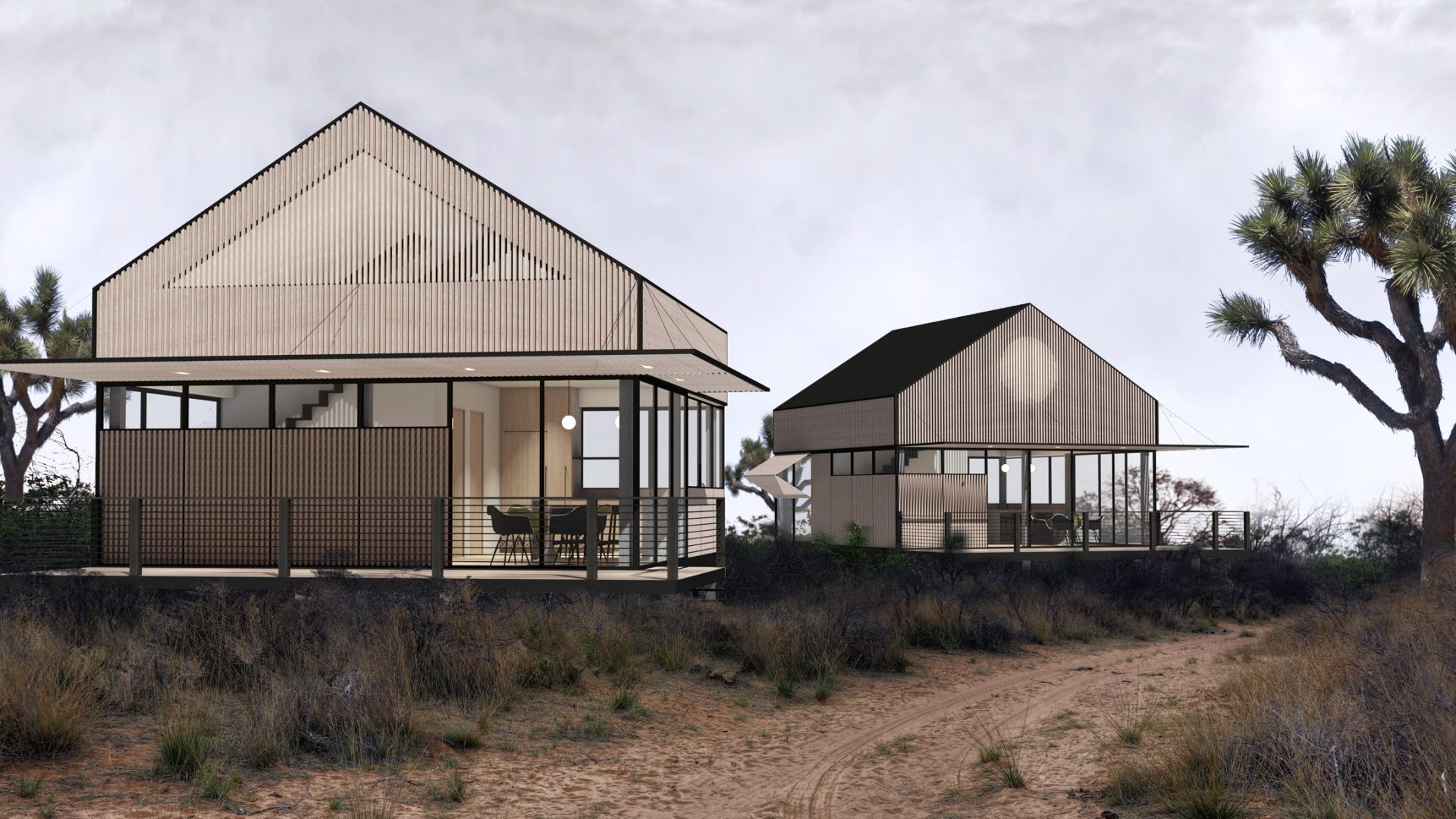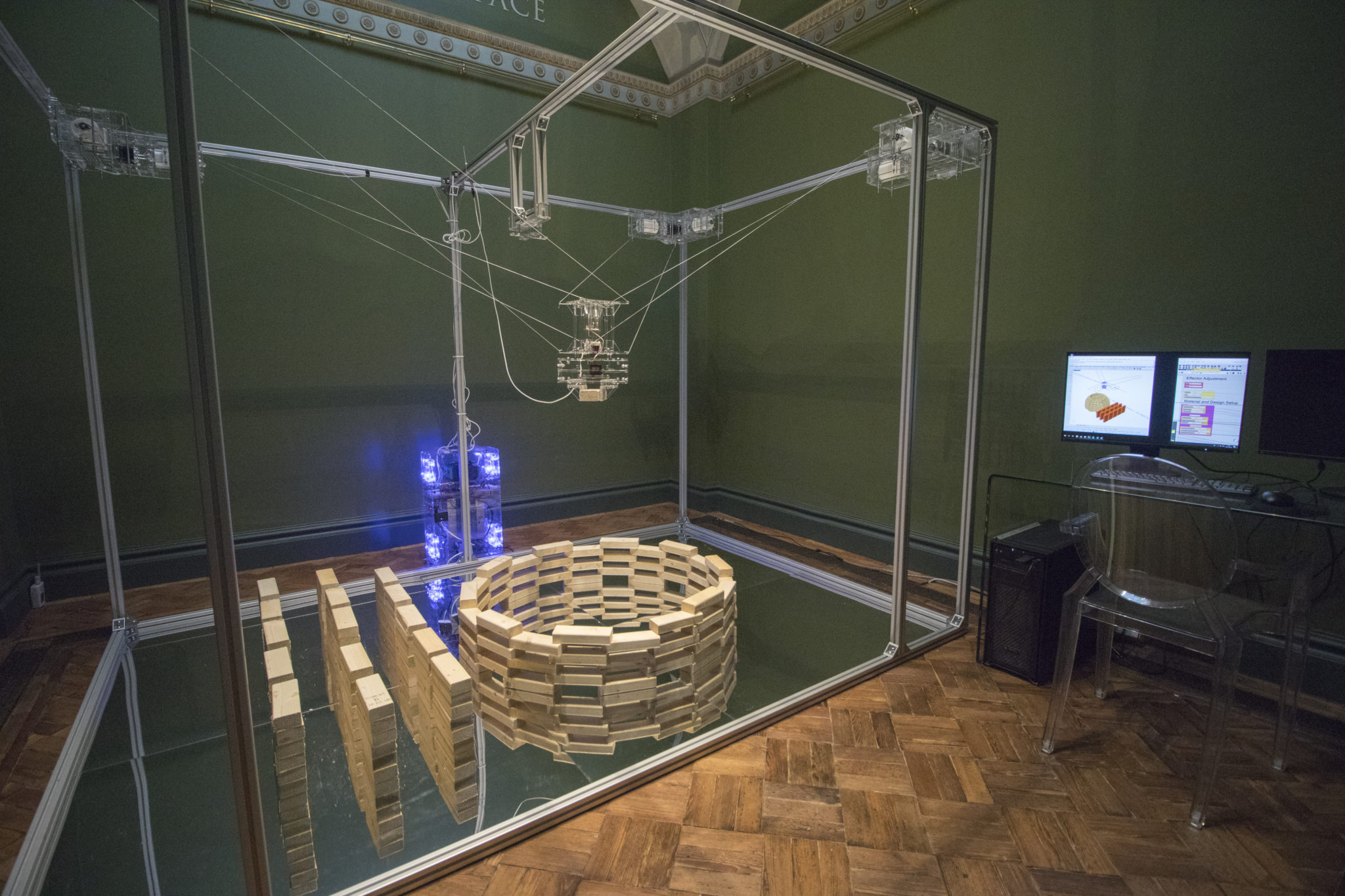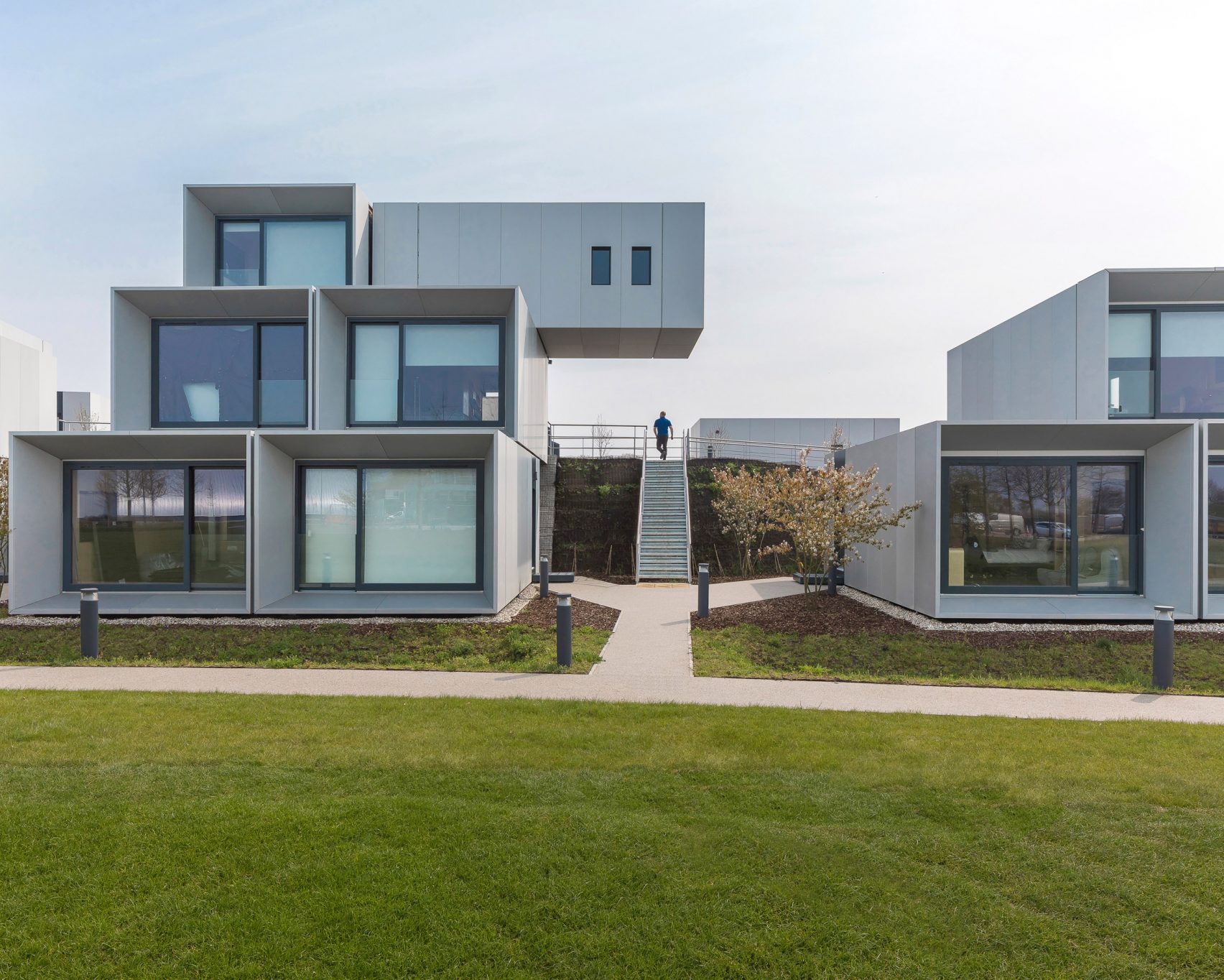
Unique Standardisation, A Means Towards A Technological Industry
Modularity and prefabrication are not new ideas within the construction market. Several architects like Frank Lloyd Wright have given their interpretations of this design method. One such example is Wright’s Burnham Block project in Milwaukee, which consists of six prefabricated homes the famous American architect designed as a series for mass production.
The industry has been exposed to constructing through interlocked pieces or with whole elements manufactured in factories. As a result, the concept of prefabrication and modularity can be found in our society. Even toys like Lego, which started in 1949, resemble the same prefabricated elements scaled down to children’s size.
The Lego system or simply “The System,” as many enthusiasts call it, is a straightforward scheme based on height, length, and width that rules all of the Lego pieces so that they can fit one with the other to build anything modularly. Like Lego, prefabricated elements for architecture follow precise patterns to be attached and combine one another when brought together. The method of modular pieces being built off-site and put constructed a second time has been long-established. Yet, with architecture firms and companies pursuing this practice, what can be learned from the modular construction boom?

The construction market, in general, has seen intense urbanization due to population growth and a great increase in the demand for infrastructure in emerging economies. In addition to these socio-economic factors, the construction industry has been known as one of the slowest businesses to keep up with new technologies. The 21st century has also seen this “sustainability awakening” on various issues afflicting the environment. The construction industry is also slowly trying to tackle this problem by recognizing the industry itself is one of the biggest environmental threats.
These combined factors have triggered developers to search for faster methods to deliver more projects on time, with higher efficiency and fewer environmental concerns. Prefabricated and modular construction methods seem to be giving an answer to developers, being able to address all of the above points more efficiently than any other traditional construction technique.
From 2020 to 2021, the global single-family modular and prefabricated housing construction market is expected to grow at an annual rate of 27.3%. Similar figures are forecasted in the number of commercial and industrial prefabricated projects according to a report shared by PR Newswire in May 2021

Perhaps, a world like Legos is not entirely the way we want our cities to look. Still, paradoxically Legos illustrate the benefits of using modular and prefab construction: no waste is produced, the components can be taken apart and easily rebuilt, and changes and expansions to the structure are possible since each element works independently.
Modularity in construction has grown in appeal for various reasons. This construction method greatly reduces the cost and time attached to projects. Prefabrication is expected to minimize project deadlines by 50% and cut down costs by 20%, signifying that this construction method will improve productivity and reduce expenses from material waste or disorganization on-site.
Construction is a slow and costly business. These figures could already convince many developers to entrust their projects to modularity. Furthermore, common risks hazards occurring on sites, which also slow down the work, are critically lowered since prefabricated pieces are built and partially assembled by trained personnel in factories or warehouses (controlled spaces) and only after transported to sites. This minimizes potential risks and avoids being dependent on climatic changes since modular pieces are built within closed spaces.
When talking about modular construction, environmentally friendly and sustainable are words frequently associated with this method. The amount of waste and material produced is substantially decreased since modular elements are made in a controlled environment that can easily manage waste. Moreover, prefabricated pieces are flexible and can be moved and adjusted without disrupting the surrounding territory and landscape. Considerably less energy is required to produce modular buildings, up to 67% less than what is normally employed in traditional construction methods. Therefore, it is not difficult to develop an interest in these prefabricated living spaces and their various advantages.
Beyond these unique assets and growth in popularity, modular construction has its disadvantages. If one of the positive aspects of this construction method is that structures are made off-site, this means those same parts will have to be transported to the site. The potential for fractures and damages to prefabricated elements increases as well as high costs for transportation depending on the site location. Another important point to raise is labor and skillset. Since individuals often make these modular structures with additional training, the number of available workers with these skillsets can create a disparity in the number of skilled workers and laborers.
A growing number of companies are turning towards modularity and prefabrication, and multiple companies have now affirmed their names around this business; Red Sea Housing Services based in Saudi Arabia, Skanska AB with headquarters in Sweden, Bouygues Construction located in France, and Kiewit Corporation based in the US to name a few. It would not be a long stretch to say that these companies have foreseen something in modular construction. Take projects like the Clementi Avenue Residential Complex in Singapore. It is a residential tower completely designed with modular elements that boast the record as tallest modular building in the world, reaching a height of 200m.
One of the leading prototyping technologies in the field of prefabrication is Polibot, a high-wire robot able to construct infrastructure by itself. This new technology informs the industry’s possibilities for the future. It can function when designers input codes into its server when translating into the construction of particular elements. This type of technological advancement signifies that designers will be able to redesign, build, unbuild, reuse or change buildings by simply changing their modular elements or units.
Polibot is only one of the new prototypes and AIs that have been developed to be integrated into the prefabrication industry, an important achievement for construction, which seems to have finally met the pace of contemporary technology.
“Digital platforms and AI could be the future of customizing prefabricated modular housing if we are less wary of technology,” says Patrik Schumacher, who has been dedicating part of the work in his practice to the employment and acceptance of new technologies and prefabricated design.

With interest and engagement in modular construction, growing platforms like Amazon are now exploring the possibilities of selling prefab houses online. As peculiar as it sounds, the giant corporation can now deliver prefabricated cabins in the US just like goods on their online market. No matter how many sales this campaign is doing, this may revolutionize the concept of housing. Can prefabrication turn housing into a “deliverable product”? The extent to which a construction methodology like prefabrication can change the way we perceive homes is interesting. Due to its flexibility and “deliverability,” finding houses on an online platform doesn’t seem too farfetched.
These actions could revolutionize the entire concept of infrastructure; prefabricated design could mean architecture will become an industrial product like many other goods, and it is interesting to think how this could change the way architecture is done. Some architects have always discarded prefabrication because it could lead to mass production of “standard design,” a concept that could jeopardize the free-thinking put in every project to make it unique and adequate to the site. Will prefabrication and modular design force upon us a new type of design-making?
In a world where one can order a home from an online shopping platform or where factories can mass-produce housing and other infrastructure, what will happen to the future of architecture? We could speculate on what might happen to the architectural drawings depicting the relation between the building and the context in a prefabricated urban space where context becomes less relevant if the product is simply mass-produced.
In the globalized world, collaborations are key towards development in any field. Amazon has decided to partner up and fund an important prefabricated building company, Plant Prefab, to implement its technologies like Alexa in their designs and boost this construction method. Economical giants like Amazon, investing in a developing business like modular architecture, signify a step towards establishing modular and prefabricated buildings in our daily lives.
Plant Prefab, which aims for sustainable and efficient infrastructure, states that their approach could reduce building time in half and it could lower costs by up to 25% in large cities. Despite the curious combination of a huge entrepreneurial company and a modular construction company, the role of architects and designers is still valuable in the process. Companies have teams of architects that work closely together to deliver spaces beautifully designed.
It is controversial to have such parties coming together in the construction field. Blending architecture with entrepreneurial companies will impact the design world, workforce, workflow, and framework. Amazon’s new acquisition would mean a great leap in the direction of standardization in architecture. It would also mean a boom for technologies and innovations in architecture, design and construction.
The eagerness for this demand for new construction methods like modular buildings or prefabrication is important. It challenges, enhances, and reshapes the perspective people have of construction. Someone would say that this could just be a trend that will not be embraced as a new way to reshape our cities. However, this cyclical architecture trend with Wright and is here now can rise again in the future. However, what Wright did not have on his side in the 1910s was huge companies sponsoring and partnering with this idea. This is a great advantage to push this concept forward and make it concrete.
Many architects are now embracing these changes and technologies towards a modular and flexible urbanscape. Prominent architecture offices like WilkinsonEyre have designed a student village at the Dyson Institute of Engineering and Technology only using prefabricated cross-laminated timber cabins, manufactured off-site and then easily assembled on-site. These student pods are not only simple modular elements. They are examples of prefab applications showcasing cantilevers and discarding the idea of a monotonous standardization that creates cozy and chic living spaces.

